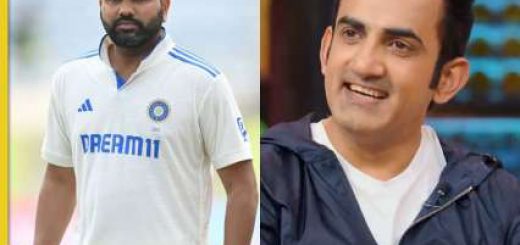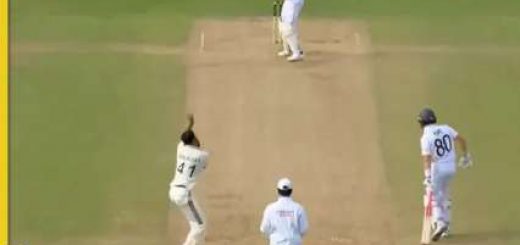SwaDesh Tops Bangladesh
Imrul Kayes falls short of his crease as Bangladesh, chasing 303, stumble early on. Kayes’s was the second wicket to fall after Tamim Iqbal was dismissed on the previous ball. (Source: Reuters photo)
At the end of 25 overs, India were 99/2. For the first time in the tournament, their run rate had dipped below four. Bangladesh were getting excited and they were letting it show. Rubel Hossain, after getting Virat Kohli caught behind, launched into a wild and triumphant dance. Soon after, India were 115/3. Taskin Ahmed and skipper Mashrafe Mortaza would out-do Hossain with their tumbling-to-the-ground chest-bumping tango.
Bangladesh’s joy was unabashed, but amateurish.
In the Indian section of the stadium, there were anxious murmurs about the 2007 World Cup when Bangladesh knocked India out in the preliminary stage. The second quarter-final wasn’t going the way many expected. India were facing a problem, something they had never encountered in this World Cup. Twice in the tournament they had batted first but never lost more than a wicket before reaching 100. While chasing against West Indies and Zimbabwe, they had faltered but MS Dhoni had bailed them out. Falling wickets, a dropping run-rate while setting a target was a new challenge, at least at this World Cup.
Related
India seemed to have lost their way. They needed maps, guides, managers and workers. Rohit Sharma and Suresh Raina were well-equipped. They showed India didn’t just have batting depth; they also proved that the world champions had seasoned campaigners and proven match-winners at every position. Sharma and Raina would oversee India’s stunning revival. From below four at 25 overs, India’s run rate in the last 25 overs would climb to 8.2. They would take India past 300, and the game beyond the weak-hearted Bangladesh.
A batting masterclass
The 122-run partnership between Sharma and Raina was a masterclass in the art of shorter-version batting. Though they are in their late 20s, they are veterans of ODI and T20 cricket. They came together with just 22 overs to go and treated the World Cup knockout game as an IPL evening. For the last seven years now, they’ve spent two months each year getting into similar face-offs with bowlers who are far superior than the ones Bangladesh had today. The best in the business have tutored them to explore new angles, concentrate on specific areas in the field and on judging which bowlers to milk. With this experience, they know when to lurk in the shadow and when to pounce on the unsuspecting.
In the first seven overs of their association, the two, between them, hit just three fours. This was followed by the batting powerplay. You thought that Raina would bring out his ‘golf swing’ and send the ball to the cow corner and Sharma would be dancing down the track or going down on his knees playing the pre-meditated sweep. That would have been predictable. That would’ve been so amateurish, like their less-experienced excitable rivals.
Raina and Sharma had a method to their moderation. In the opening two powerplay overs, Raina would hit the first ball for a four or six. After the flying start, he would concentrate on placing the ball and running hard. Sharma would take his chance towards the end. They took turns playing the wingman to each other.
With 2.5 overs of powerplay left, it would start raining. You would think the two would lose momentum. But that too is amateurish. They scored 10 and 11 runs in the final two powerplay overs. They weren’t too much, but that’s what the plan was as Dhoni said after the match. “What’s important is not to consider powerplay as a lottery system where you’re like, okay, five overs, we want to get 55, 60 runs. I think five overs if you look for 35 to 40 and if you bat well, you will end up getting 45 runs. Not only that, it actually gives you a bit of momentum going into the slog overs,” he said. India got 50 in the slog overs and 98 in the last 10. Walk, jog, run, sprint, was India’s plan and it had worked.
The final overs were also not about mindless slogs, as at least one frontline batsman needed to stay till the end. So Raina would be bisecting extra cover and mid-on or beating leg gully by flicking a ball to square leg. Sharma would defend yorkers and if they were marginally short he would get under them and send them over the long-off fence.
Sharma and Raina have been India’s original prodigies of the last decade. But of late, they have been living in the shadows of couple of youngsters who made it to the Indian team after them. During the England and Australia tri-series before the World Cup, Virat Kohli and Ajinkya Rahane were the stand-out batsmen. But at the World Cup, Sharma and Raina have stepped it up. At this World Cup, India have players who can face every new challenge thrown at them. Without being anxious and looking amateurish.
Source:: Indian Express







